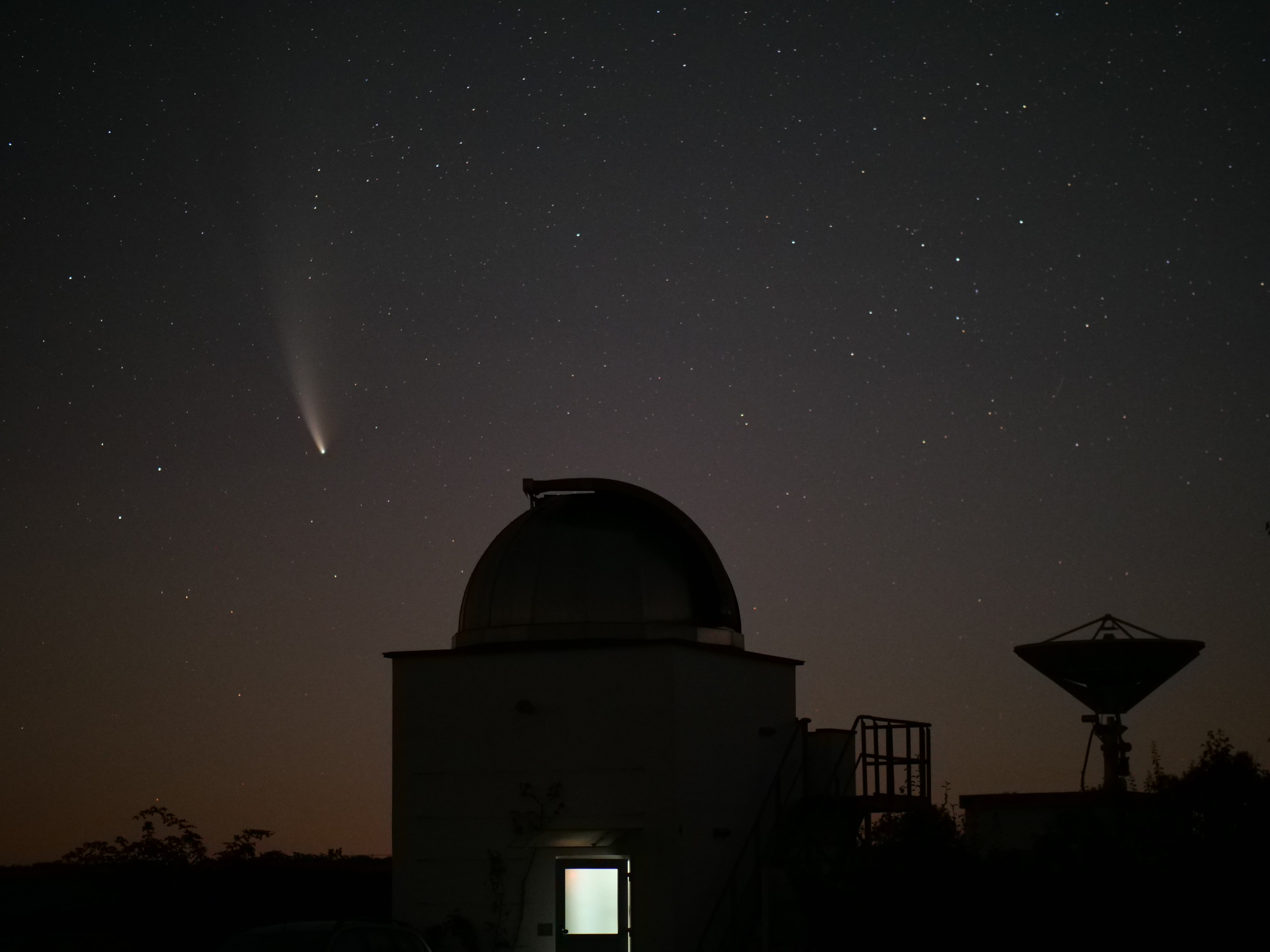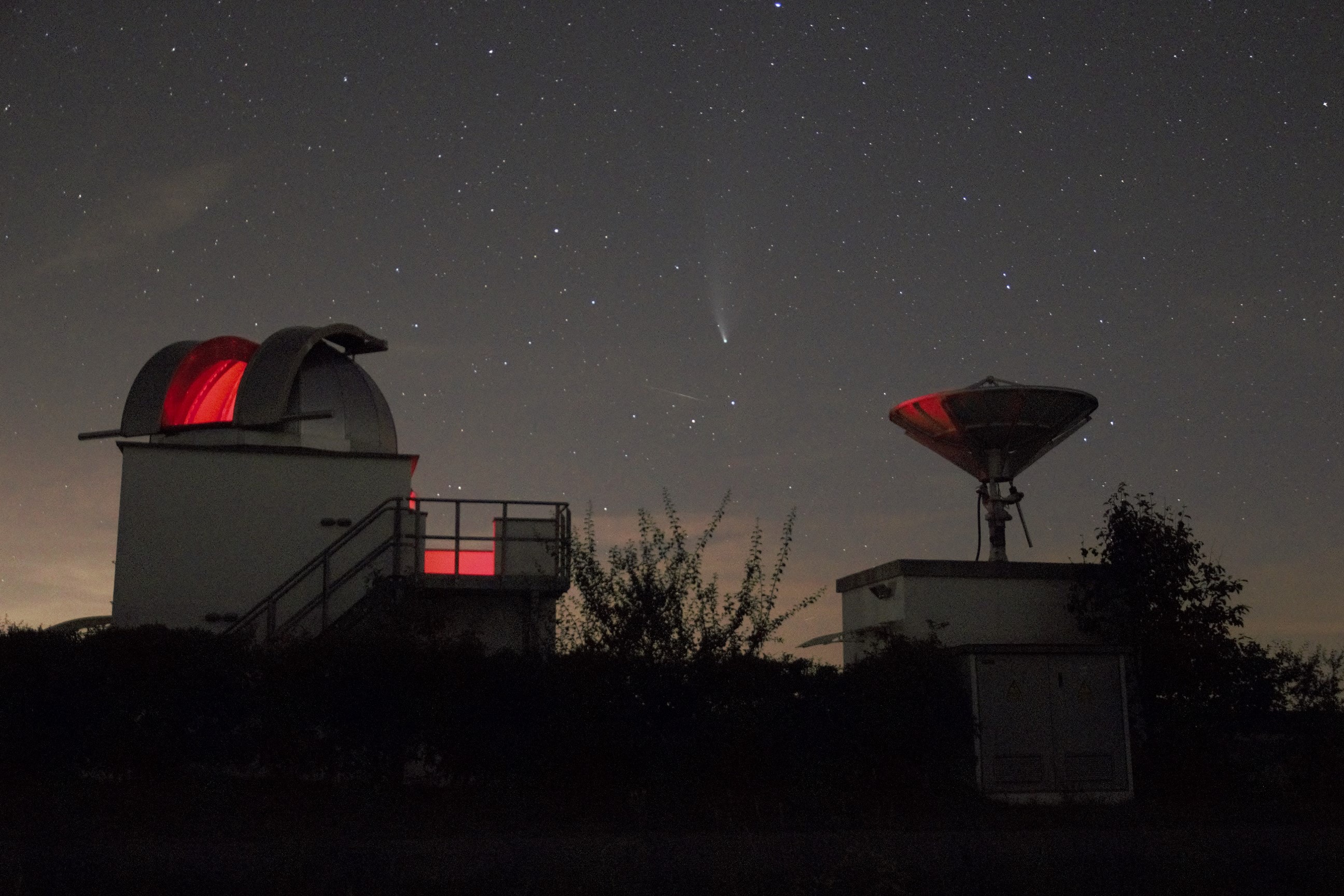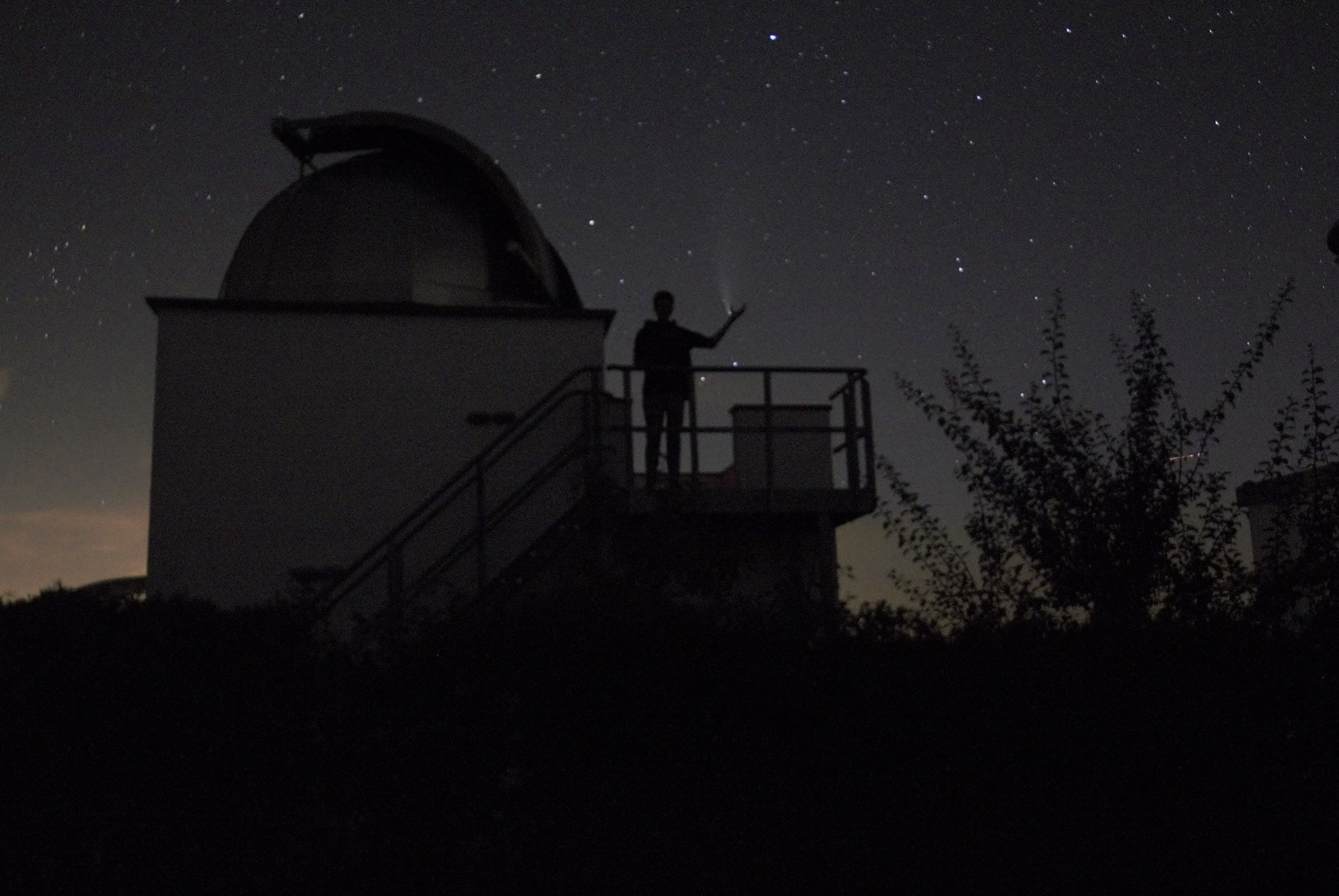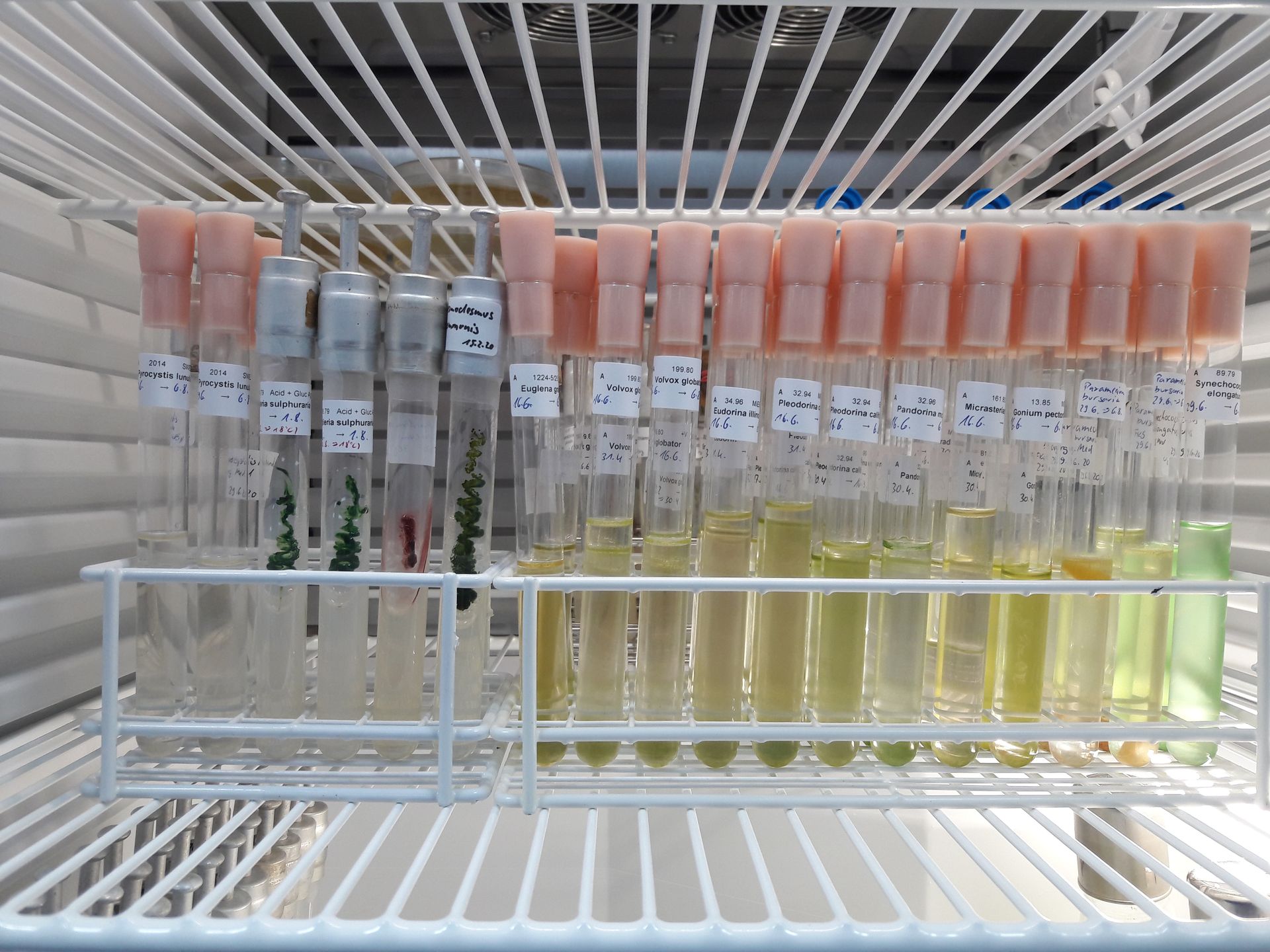Comet C/2020 F3 (Neowise) above the Hans Haffner Observatory
For a comet of this size - the diameter is estimated by NASA to be about 5000 meters - this celestial object was discovered unusually late, only in spring this year. On March 27th, 2020, NASA's Wide-Field Infrared Survey Explorer (WISE) detected the comet as part of the NEOWISE project, which scans the southern sky.
Already on July 3rd, comet C/2020 F3, as it has been correctly named since then, reached its perihelion, the point closest to the sun on its elliptical orbit. Comets consist mainly of ice, which is made of water, carbon monoxide and carbon dioxide, and dust - which is why astronomers call them dirty snowballs. When such an ice ball approaches the sun, the volatile part of the matter begins to evaporate and forms the coma (shell) around the comet's core. By the solar wind a part of the coma is pushed away, which can be seen as a tail.
From the beginning of July, NEOWISE, as its colloquial name is known, could be observed very well in the morning sky above the Hans Haffner Observatory. As he now moved away from the sun again, he became darker with each passing day. At the same time, visibility shifted further forward during the course of the day, so that from mid-July onwards it could also be seen in the evening sky. On 23rd July it had reached the smallest distance to the earth with 103.5 million km. In the following nights the brightness of this tail star decreased more and more and since the beginning of August it is no longer visible with the naked eye. If it survives its journey through space undamaged, C/2020 F3 will not pass earth again for another 6700 years.





